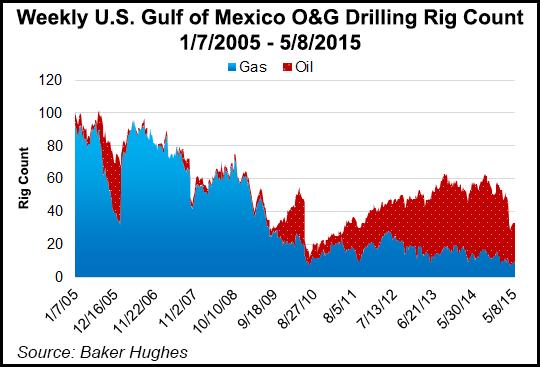AccuWeather Joins Consensus Forecast: Mild Atlantic Hurricane Season This Year
Despite the formation of Tropical Storm Ana earlier this month — several weeks before the official start of the 2015 Atlantic hurricane season — the number of tropical cyclones this year is expected to be below normal, according to AccuWeather forecasters.

The forecasters said they expect a total of eight named storms, including four hurricanes, only one of them major (Category 3 or higher), to form during the Atlantic hurricane season, which runs from June 1 to Nov. 30. Two or three of those systems are likely to make landfall in the United States, they said.
“Last year’s hurricane numbers were a little bit higher than what we’re forecasting right now, but the environmental conditions are somewhat similar to last year,” said AccuWeather Senior Meteorologist Dan Kottlowski. “Last year’s upper-level winds actually looked like an El Nino-type pattern, so what we got last year will be pretty much the same as this year,” he said.
The 2014 hurricane season was a calm one, producing a total of eight named storms, including six hurricanes, two of them major, and offered a relatively minor threat to North American energy interests (see Daily GPI, Nov. 26, 2014). A combination of atmospheric conditions last year acted to suppress hurricane formation, including very strong vertical wind shear, increased atmospheric stability, stronger sinking motion and drier air across the tropical Atlantic, according to the National Oceanic and Atmospheric Administration’s National Hurricane Center.
The Gulf of Mexico is “the biggest area of concern” this hurricane season, Kottlowski said. “The water temperatures are warmer [in the Gulf of Mexico] than in the past few years, and this could support early-season development,” he said.
Ana formed about 170 miles south-southeast of Myrtle Beach, SC, May 7 and achieved Tropical Storm status, but weakened as it approached the coast and was downgraded to a Tropical Depression shortly after making landfall May 10 (see Daily GPI, May 8).
AccuWeather’s tropical forecast was in line with others released this year by Weather Services International (WSI) and Colorado State University (CSU). WSI forecasters said they expect a total of nine named storms, including five hurricanes, only one of them major (see Daily GPI, April 21); the CSU forecast was 7/3/1 (see Daily GPI, April 10). Both the WSI and CSU teams said an El Nino event in the Pacific “of at least moderate strength” this summer and fall, and “quite cool” water in the tropical and subtropical Atlantic, are expected to combine to limit tropical storm activity.
The 1950-2014 normal is 12/7/3, and the more recent “active period” (1995-2014) normal is 15/8/3, according to Todd Crawford, WSI chief meteorologist.
Increased natural gas production from U.S. onshore shale plays in recent years has lessened the potential impact of Gulf hurricanes on prices and supply (see Daily GPI, Sept. 18, 2013). Total marketed natural gas production out of the Federal Gulf of Mexico (GOM) has been on the decline since 1997, when it was 14.05 Bcf/d, according to Energy Information Administration (EIA) data. By 2014 that number had tumbled to 3.37 Bcf/d, and EIA estimates that it will continue to decline to 3.17 Bcf/d this year and 2.97 Bcf/d in 2016.
In a recent webinar, NGI‘s Patrick Rau, director of strategy and research, said there has been a large swing as to where gas is produced in the United States (see Daily GPI, April 8). The GOM in the 1990s represented around 25% of total U.S. gas production; today it’s about 5%, he said. Appalachian gas output grew from less than 6% of domestic production in 2006 to more than 20% in 2014. A replay of the 45-minute webinar is available at www.naturalgasintel.com/webinar.
© 2024 Natural Gas Intelligence. All rights reserved.
ISSN © 1532-1231 | ISSN © 2577-9877 |
